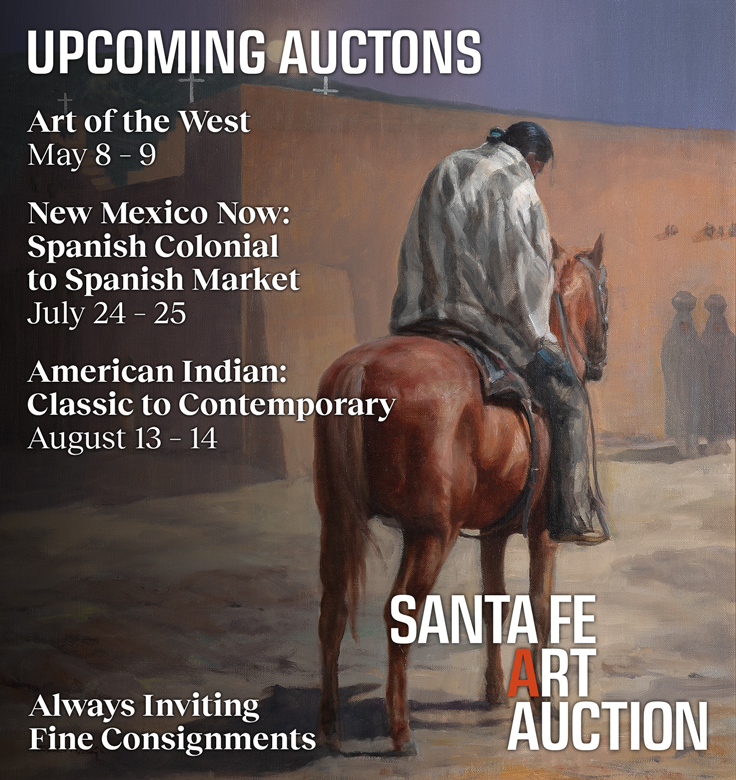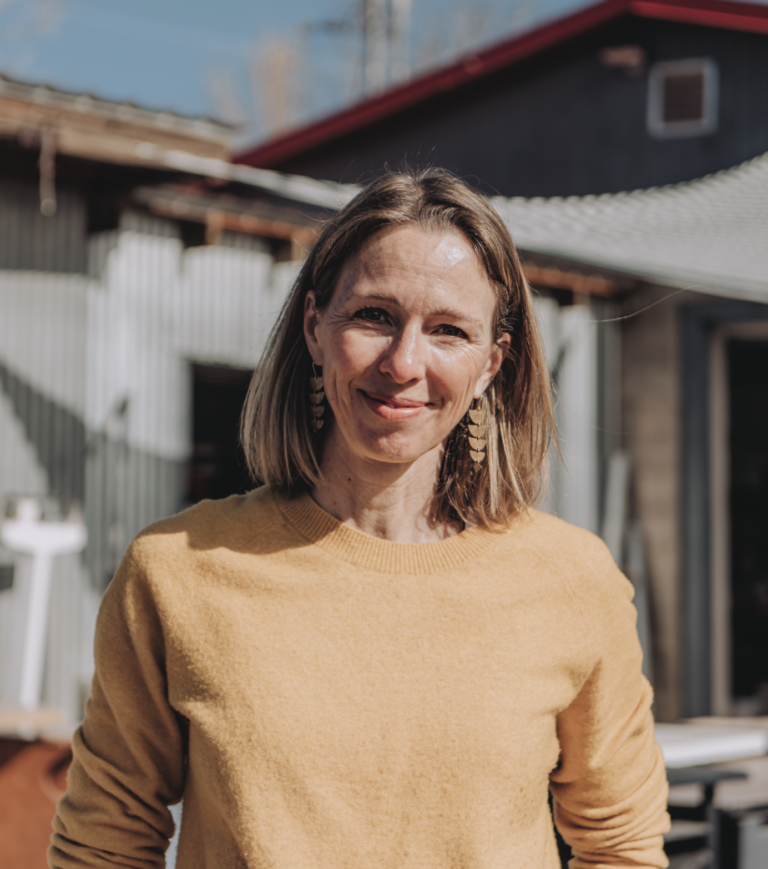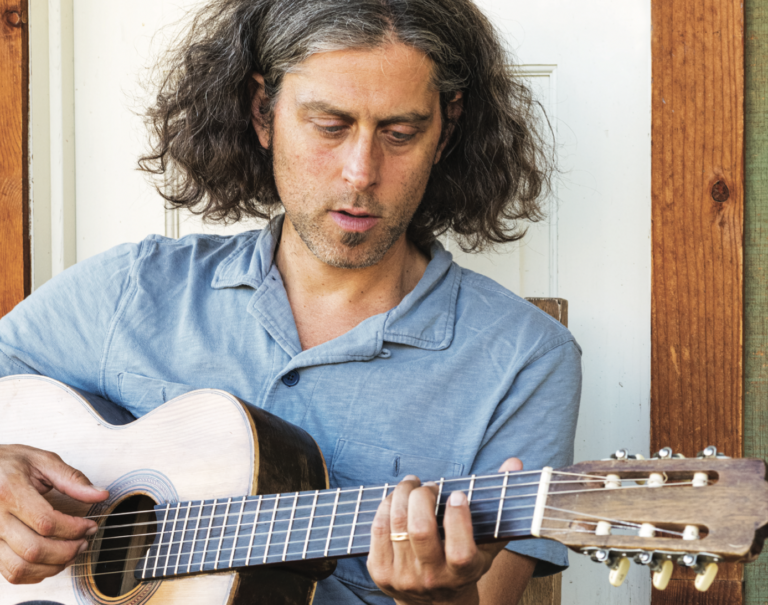YES, SHE GOT ENGLISH LIT DEGREES from UC Berkeley and Harvard but somehow landed in Scotland studying weaving. “That’s when I began to discover myself as an artist,” she says. “Weaving tapestry, I experienced, through my hands, the world as a woven structure. For the first time, life made corporeal sense to me.”
That led to a deeply successful career as a fiber artist, paper maker, photographer, painter, and teacher. Today, her work resides in private and museum collections around the world.
After a recent cancer diagnosis, Judy says she’s taking time to rest at her creekside home/studio in Galisteo. But during our conversation, she mentioned at least two new art books she’s working on.
Materials – glass, sand, mud, feathers, sticks, fiber – have been maybe the most compelling part of her work, and we were particularly interested in learning more about a series of works all made from a crow. Yes, a crow.
What are you working on these days?
Since receiving the cancer diagnosis, I have turned my energy to the healing process. I’m working with different modalities: with a brilliant general practitioner, a remarkable surgeon and her team, a profound doctor of Tibetan medicine, and an amazing sound healer who lives here in Galisteo. When I had my surgery at UNM Hospital, I was stunned by the dedication and courage of the nurses, the surgeon, and her team.
My work is always about distilling to the essential. I wondered, thinking about the healers – including a friend who has spent years using his hands to heal – What do these healers have in common? Before going into surgery, I wanted to take the fear out of the word, so I looked up the etymology of “surgery.” It comes from the Proto-Indo-European root ghes, meaning “hand.”
For one of my next books, I’ve been exploring the question Where Does Art Come From? Now, I am imagining I’ll begin the book with hands: I want to ask each of these healers to find something to hold that informs the way they see the world. Then I’ll photograph them holding that object.
What would you hold?
That’s a very interesting question. I think I’d hold a phrase in my hands. 50 years ago, when I was living in Scotland and learning how to weave, my first husband, Michael, was in a car accident with my three sons who were four, six, and eight.
In 1972, Roberta Flack’s “The First Time I Ever Saw Your Face” was a popular song. A phrase in it, “Like the trembling heart of a captive bird,” moved me deeply. Dr. Shaw was the pediatric neurosurgeon who saved my four-year-old son’s life through two major brain surgeries. I wove this phrase into a tapestry to thank him. And that is what I would hold in my hands. It speaks of the creative process and the liminal space between life and death, sleep and wake.
It holds the smoke-like prayer quality of language, of breath. I lived on the Hopi reservation for 12 years with my husband, Phillip, whose father was Hopi. Out there, smoke and prayer, breath and prayer, are connected. Language and breath become prayer and song and smoke.
It’s been almost 50 years since that accident, and my boys are all doing fine.
Tell us about your crow series.
I wrote something about this series:
Tens of thousands of years ago, we mystically depicted the bird in drawings on cave walls. We decorated our palaces and tombs with images of birds. In poetry and myth, we have admired the bird’s lyrical song and freedom of flight. We have studied, hunted, and eaten the bird, decorating our bodies with its feathers. We have revered the bird as a symbol of transcendence. In Christian theology, the dove represents the Holy Spirit. The Hopi honor the eagle, using its feathers for ceremonial purposes. These feathers carry prayers for rain, crops, and a good life for all creatures. The beautiful songs and elusive spirits of birds touch us daily. They hold time before memory.
I found a dead crow on Highway 41 in New Mexico.
I saw what looked like tire rubber on the highway. I stopped, and there it was. No blood on it, nothing. Just a dead crow. I was compelled to commemorate its beauty.
So when I returned to the Hopi reservation a few days later, I photographed the crow. Then, I plucked it, sorting the feathers. I cooked the crow. Phillip came home for lunch from his job with the tribe and, sniffing the pot, said, Honey, that chicken smells really bad.
I bleached its bones, Then, I lay them outside for the sun to continue the bleaching process. I wanted to honor the spirit of the crow by using all its feathers, bones, and organs. This is the resurrection of the dead, the entry into spirit. It is deeply healing. And today, the crow’s spirit continues to inform me and my work at a profound level.
After I used many bones, feathers, and organs to make the 25 pieces in The Crow series, I buried the remaining bones and organs. The word sacrifice, comes from the Latin sacre, “sacred,” and facio, “to make.” I was given the gift of this crow to make sacred.
WANT TO READ MORE? SUBSCRIBE TO SANTA FE MAGAZINE HERE!
Photo Diana Gaston








